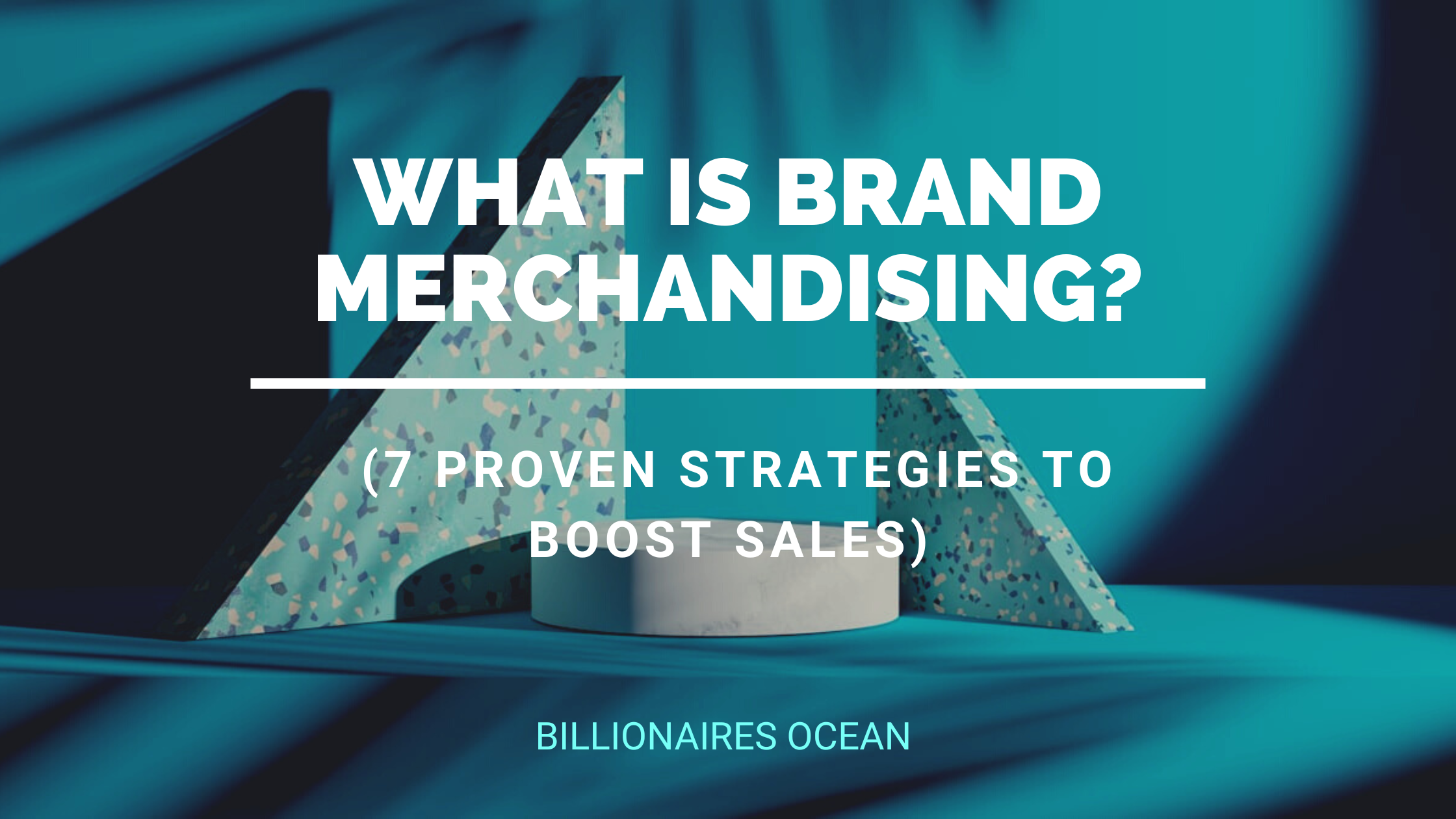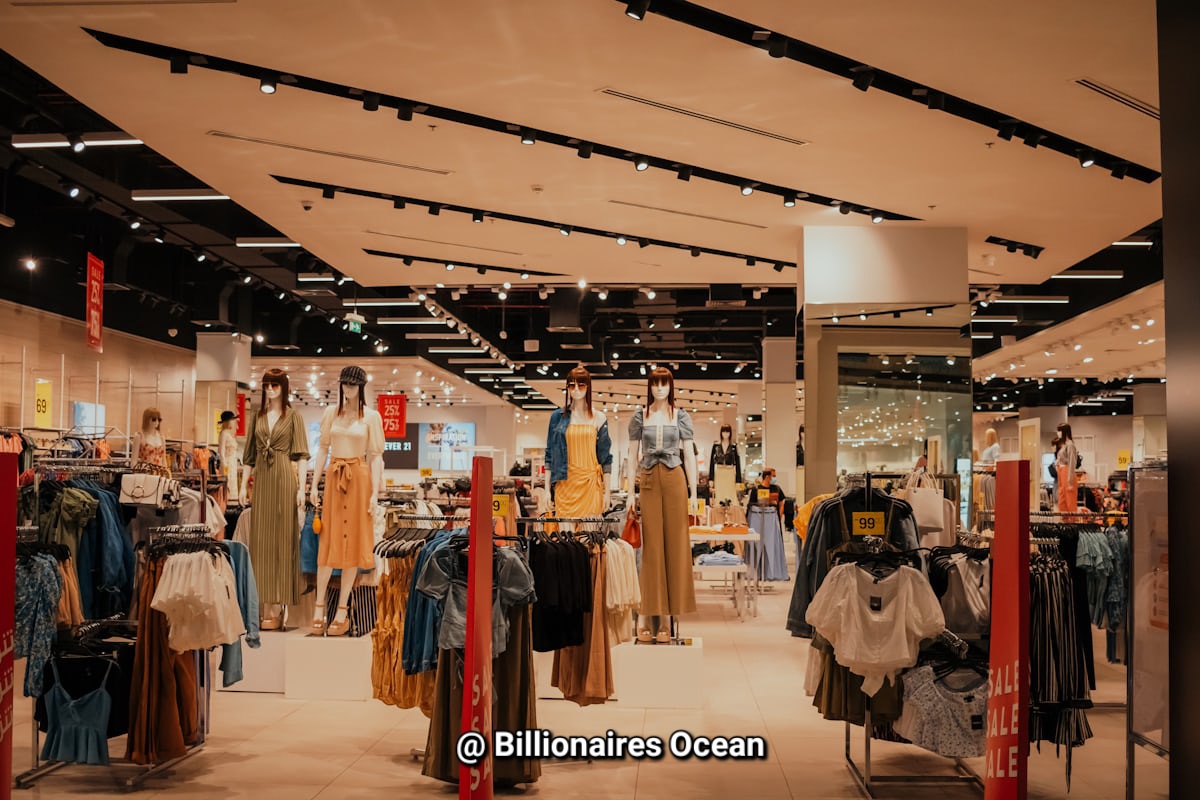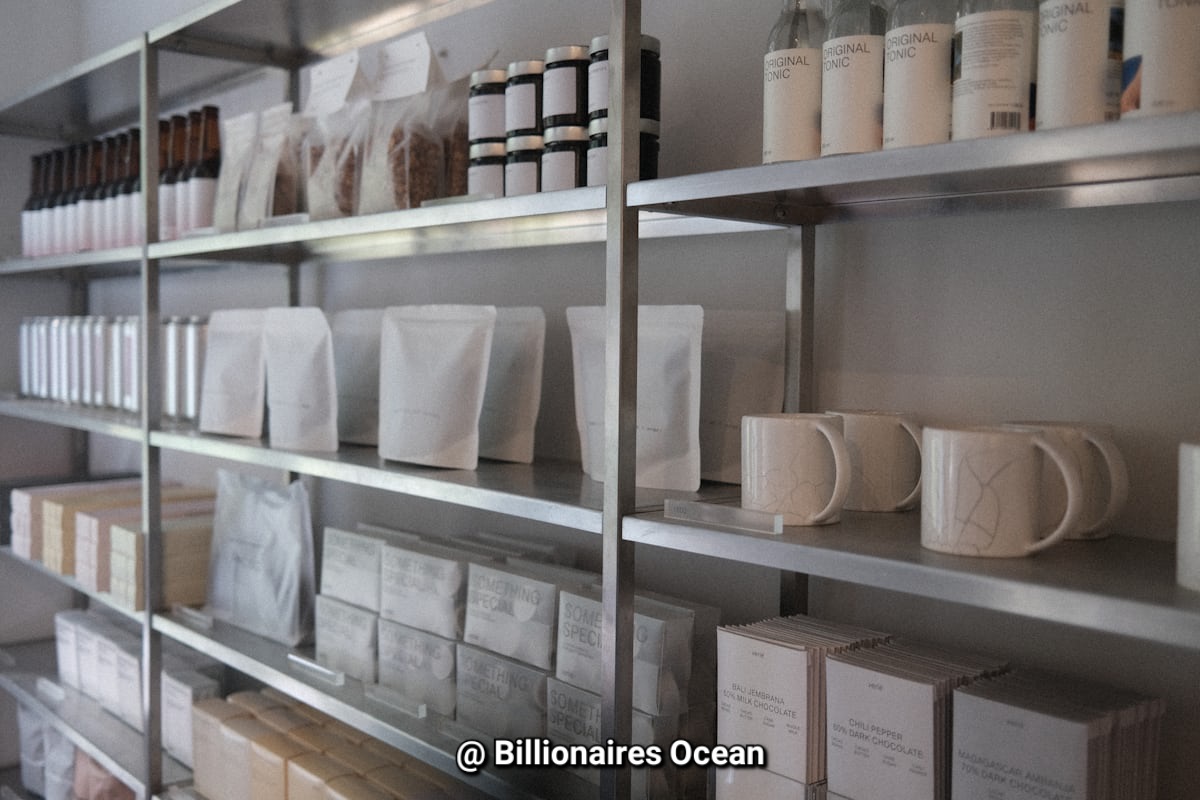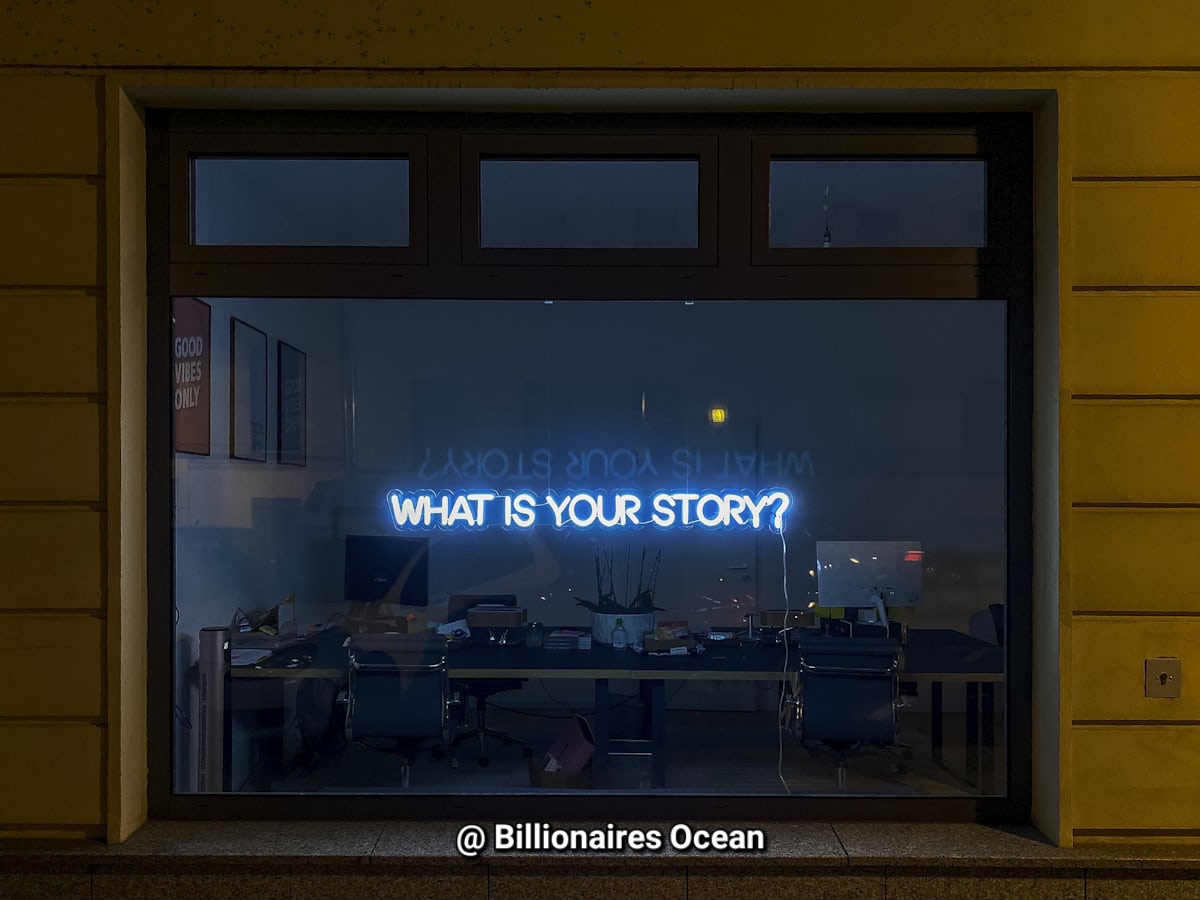
“Good branding creates followers; great merchandising creates believers.”
- What is Brand Merchandising? and Why it is Everywhere
- What is Brand Merchandising actually?
- The Power of Branded Merchandise
- 7 Proven Brand Merchandising Strategies
- Start with Strong Branding (Logo, Colors, Identity)
- Focus on Everyday Usability
- Create Limited Editions to Build Scarcity
- Make Merchandise a Lifestyle Choice
- Link Merchandise to Tours and Events.
- Integrate physical and digital merchandise.
- Telling Stories Is Vital
- What are the four types of merchandising?
- Examples of Merchandising Businesses
- Starting Brand Merchandising Business (Step by Step)
- Quick Recap
- FAQs related to Brand Merchandising
What is Brand Merchandising? and Why it is Everywhere
Have you ever entered a Starbucks and saw the shelves filled with shopping bags, tumblers, and cups with that recognizable green logo? Have you ever noticed how Marvel fans proudly display their favorite superheroes’ T-shirts, caps, and hoodies?
Making connections and increasing visibility are more important than simply selling goods. This is how brand merchandising works. Merchandising has the power to transform a basic logo into a way of life when done correctly. Your brand is now more than just a name; it’s something that people wear, live, and display on a daily basis.
If you’ve been wondering, “What is brand merchandising?” let’s define it first, then go over 7 successful strategies with merchandising strategy examples.
Read more – 5 secret on how to be mysterious
What is Brand Merchandising actually?
At its foundation, brand merchandising is the process of promoting your brand through real or digital objects that reflect your identity, such as logos, slogans, mascots, or even colors. Consider transforming your brand into something that is real that people can own, wear, or use.
Simple example:
- Starbucks sells mugs and tumblers, allowing you to carry the Starbucks brand with you when you sip coffee at home.
- Disney sells toys with Mickey Mouse → Kids enjoy both watching and playing with Disney.
- Nike uses the Swoosh emblem on shoes, backpacks, and T-shirts → It’s more than simply sports equipment; it’s a way of life.
This is why many people wonder, “What is branded merchandise?“. The actual product—T-shirts, mugs, water bottles, hats, or digital goods carries your brand’s ideidentity

The Power of Branded Merchandise
Why do companies take part in merchandising, whether they are little local cafés or multinational global corporations like Apple? because it functions similarly to walking ads.
Not only are people consuming your goods when they wear your T-shirt or carry your tote bag, but they are also promoting your brand without you having to pay for advertisements. T-shirts and sweatshirts, caps and hats, coffee mugs and tumblers, shopping bags and backpacks, and phone covers and laptop stickers are some of the most popular merchandise. Each of them produces small yet effective brand impressions every day.
7 Proven Brand Merchandising Strategies
Now let’s dive into 7 proven strategies.
1. Start with Strong Branding (Logo, Colors, Identity)
Successful merchandise requires an unique logo and brand identity.
Steps:
- Create a T-shirt logo.
- Use the brand colors consistently.
- Keep your message simpler (short taglines and symbols).
📌 Nike began with a $35 swoosh logo in 1971. Today, that one sign produces billions of dollars in sales since it is easily recognized on shoes, bags, and clothing.
Read more- Powerful Mind-Body Connection
2. Focus on Everyday Usability
The finest products are those that consumers use on a regular basis. Your brand won’t be promoted if your product is just sitting on a shelf.
Examples of practical branded goods include:
- Starbucks coffee cups, which are used every day ☕
- Shopping tote bags 🛍️
- Gym water bottles 💧
- Phone covers 📱
📌 Starbucks offers cups that become a part of your daily routine in addition to coffee. Every drink increases brand awareness.

3. Create Limited Editions to Build Scarcity
Humans enjoy uniqueness. Limited edition items causes FOMO (fear of missing out). Scarcity may be used in various ways, such as holiday specials. Product drops are limited. Teamwork with influencers.
📌 Supreme created its power on this. Their goods sells out in minutes, transforming even a $40 T-shirt into a collectible item.
4. Make Merchandise a Lifestyle Choice
“Your brand isn’t what you sell, it’s what people remember.”
The most successful brands promote a way of life instead of just goods. People are happy to display your product if it feels high-end, fashionable, or associated with their identity.
📌 In addition to being useful, Apple’s stylish accessories—such as cases and AirPods covers—also make fashion statements. Having them shows a smart and creative way of living.
5. Link Merchandise to Tours and Events.
Events give merchandise significance.
- Concert T-shirts serve as a reminder of amazing nights.
- Conference freebies keep your brand on experts’ thoughts.
- Sports jerseys promote communal pride.
📌 Coldplay offers limited tour T-shirts that fans cherish as recollections of an emotional experience. The product conveys a story long after the show has ended.
6. Integrate physical and digital merchandise.
We live in a digital and physical world. Successful merchandising combines both.
- Sell branded digital wallpapers, virtual reality filters, or NFTs.
- Offer digital gifts alongside tangible things.
📌 BTS distributes digital stickers, lightstick applications, and retail packages, creating a hybrid experience for fans.
7. Telling Stories Is Vital
Meaningless merchandise is just stuff. Products having a backstory are extremely valuable.
- Use product tags to tell the story of your brand.
- Display handcrafted or ecologically sound production.
- Link goods to charitable causes.
📌 STOMS Shoes gained popularity by donating one pair of shoes for each pair sold. The products had powerful storytelling in addition to fashion.
Read more- Secret behind Billionaires hifh energy and mental sharpness

What are the four types of merchandising?
1. Product merchandising, which includes advertising and selling digital or tangible goods.
2. Retail Merchandising: The way goods are arranged in stores to draw customers.
3. Visual Merchandising: Drawing attention with layout, design, and images.
4. Digital Merchandising: Promoting products online via advertisements, applications, and websites.
Examples of Merchandising Businesses.
Here are real-world instances of companies that have mastered merchandising:
- Disney: Mickey Mouse clothing, Marvel toys, and Frozen dolls.
- Starbucks offers coffee mugs, tumblers, and seasonal cups.
- Nike offers clothing, accessories, and sportswear.
- Coca-Cola – Vintage bottles, clothing, and home decor.
- BTS: Limited fan items and digital products.
Each has a merchandising approach centered on exposure, lifestyle, and emotional connection.
Starting Brand Merchandising Business (Step by Step)
If you’re motivated to begin, here’s a practical guide:
- Define your brand’s identity, including its logo, motto, and values.
- Select your goods type: T-shirts, mugs, hats, or bags.
- Design your items, such as a T-shirt logo and color scheme.
- Find vendors by using Print-on-Demand (POD) or local printers.
- Create sales channels for your website, Shopify, Etsy, and Amazon.
- Promote through the community, including prizes, events, and influencers.
- Track results, including sales and engagement.
Quick Recap
- What is brand merchandising? → Creating merchandise under your brand.
- Why does it work? → Lifestyle, emotional connection, and visibility.
- 7 Strategies? → Every element, from stories to trademarks, generates both loyalty and revenue. Starbucks, Disney, Nike, Coca-Cola, and BTS are a few examples.
- How to begin? ⇒ A straightforward 7-step plan.
Read more- Morning Motivation
FAQs related to Brand Merchandising
What is brand merchandise?
Brand merchandise is simply products like T-shirts, mugs, caps, or bags that carry a company’s logo, name, or design.It’s a way for businesses to promote their brand, build loyalty, and stay visible in people’s daily lives.
What is the role of a brand merchandiser?
A brand merchandiser makes sure a brand’s products look attractive, reach the right audience, and sell well. Their role is to plan, promote, and present products in a way that strengthens the brand image and boosts sales.
What are the four types of merchandising?
1. Product Merchandising – Promoting and selling physical or digital products.2. Retail Merchandising – How products are displayed in stores to attract buyers.3. Visual Merchandising – Using design, layout, and visuals to catch attention.4. Digital Merchandising – Online product promotion through websites, apps, and ads.
What are 5 examples of merchandise?
1. T-shirts – Branded clothing with logos or slogans.2. Mugs – Everyday items that carry brand identity.3. Hats/Caps – Popular wearable merchandise.4. Tote Bags – Useful and eco-friendly brand carriers.5. Keychains – Small but powerful reminders of a brand.
What is branded merchandise called?
Branded merchandise is often called promotional products or brand merch—items like t-shirts, mugs, pens, or bags that carry a company’s logo to promote its brand. ✅
Final Thoughts
So you understand what brand merchandising is and, more crucially, how to utilize it to increase sales and expand your brand. It’s not simply about putting a branding on a product. It’s about creating living experiences, sharing tales, and fostering community relationships. If done correctly, your products may turn buyers into walking brand advocates. Call to Action:
Did this guide help you comprehend brand merchandising?
- ✅ Share with your friends.
- ✅ Share your favorite example of goods.
- ✅ Signup to receive more company growth guides.
💡 Thank you for reading! Continue to be innovative, grow, and let your products convey your narrative.
Visit our other platform like quora instagram and youtube for more strategy wise knowledge. 🩵